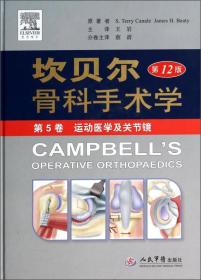
TechnologiesforDeepSpaceExploration(深空探测技术)
正版图书
¥ 102.46 4.7折 ¥ 218 全新
库存25件
北京房山
认证卖家担保交易快速发货售后保障
作者Sun 著;Zezhou、Peijian Ye 编
出版社北京理工大学出版社
出版时间2020-09
版次1
装帧精装
货号R_10756076
上书时间2023-06-15
- 在售商品 暂无
- 平均发货时间 19小时
- 好评率 暂无
- 最新上架
商品详情
- 品相描述:全新
图书标准信息
- 作者 Sun 著;Zezhou、Peijian Ye 编
- 出版社 北京理工大学出版社
- 出版时间 2020-09
- 版次 1
- ISBN 9787568290296
- 定价 218.00元
- 装帧 精装
- 开本 16开
- 纸张 胶版纸
- 页数 617页
- 字数 758千字
- 【内容简介】
- This book offers readers essential insights into system design for deep space probes and describes key aspects such as system design, orbit design, telecommunication, GNC, thermal control, propulsion, aerobraking and scientific payload. Each chapter includes the basic principles, requirements analysis, procedures, equations and diagrams, as well as practical examples that will help readers to understand the research on each technology and the major concerns when it comes to developing deep space probes. An excellent reference resource for researchers and engineers interested in deep space exploration, it can also serve as a textbook for university students and those at institutes involved in aerospace.
- 【作者简介】
-
孙泽洲,研究员,博士生导师,航天深空探测领域专家,现任职于中国空间技术研究院总体部,“嫦娥四号”、火星探测器总设计师。
主要从事深空探测项目论证、探测器总体设计等方向的研究工作。主持研制“嫦娥四号”,并成功完成了人类探测器首次月背软着陆和巡视探测。曾获国家科技进步特等奖、国防科学技术奖特等奖等多项奖励,荣获全国五一劳动奖章、中国青年五四奖章、中国青年科技奖、光华工程青年奖,入选“万人计划”科技创新领军人才。在国内外期刊发表论文30余篇。 - 【目录】
-
1 Introduction
1.1 The Significance of Deep Space Exploration
1.2 Overview of Deep Space Exploration Development
1.2.1 Overview of International Deep Space Exploration Development
1.2.2 Overview of Deep Space Exploration Development in China
1.2.3 Development Trends of Deep Space Exploration
1.3 Future Development Requirements for Deep Space Exploration Technologies
1.4 Prospects
References and Related Reading
2 Characteristics of Deep Space Environment and Corresponding Impact
2.1 Introduction
2.2 Geospace Environment
2.2.1 Main Geospace Environment Characteristics for Deep Space Probes
2.2.2 Impact of Geospace Environment on Deep Space Probes
2.3 Lunar Space Environment
2.3.1 General
2.3.2 Lunar Radiation Environment and Impacts
2.3.3 Lunar Atmosphere and the Impact
2.3.4 Lunar Soil/Lunar Dust and Impacts
2.4 Space Environment of Mars
2.4.1 Overview
2.4.2 Mars Radiation Environment and Its Impact
2.4.3 Impact of Mars Atmospheric Environment
2.4.4 Impact of Mars Dust Environment
2.4.5 Landforms on the Surface of Mars
2.5 Space Environment of Jupiter
2.5.1 Overview
2.5.2 Jupiter\'s Strong Magnetic Field Environment
2.5.3 Strong Radiation Environment of Jupiter
2.5.4 Jupiter Plasma Environment
2.5.5 Jupiter Atmosphere
2.6 Space Environment of Venus
2.6.1 Overview
2.6.2 Magnetic Field of Venus
2.6.3 Venus Atmosphere
2.6.4 Venus Surface Topography
2.7 Other Interplanetary Space Environments
2.7.1 Interplanetary Environment
2.7.2 Asteroid Environment
2.7.3 Comet Environment
2.8 Outlook
References and Related Reading
……
3 System Design Technology
4 Technology of Orbit Design
5 Payload Technology
6 Guidance, Navigation and Control Technology
7 Atmospheric Braking Technology
8 TT&C and Communication Technology
9 Thermal Control Technology
10 Propulsion Technology
11 Power Supply Technology
12 Autonomous Management and Tele-operation Technology
13 Mechanism Technology
14 Ground Test Verification Technology
点击展开
点击收起
— 没有更多了 —












以下为对购买帮助不大的评价